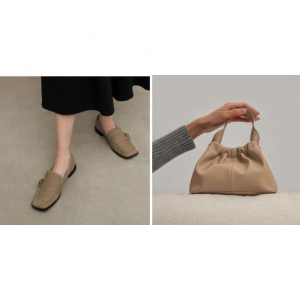
Jasmine Plant Overview
One of the best additions to any home or garden is the Jasmine plant. When it flowers the delicate blooms of the Jasmine release a rich fragrance which fills the air with a distinctively seductive scent. There are also many different varieties. It can be either deciduous (leaves falling in autumn) or evergreen (green all year round), and can be erect, spreading, or climbing shrubs and vines. It can also be grown indoors meaning that this versatile plant can fit in almost anywhere.
Flowering in Jasmines takes place in summer or spring which is usally six months after planting. The Jasmine flower releases its fragrance at night after the sun has set and especially when the moon is waxing towards fullness. Jasmine flower buds are more fragrant than the flowers.
Jasmines are native to tropical and subtropical regions of Eurasia, Australasia and Oceania, although only one of the 200 species is native to Europe. Their center of diversity is in South Asia and Southeast Asia. A number of jasmine species have become naturalized in Mediterranean Europe. For example, the so-called Spanish jasmine (Jasminum grandiflorum) was originally from West Asia and Indian subcontinent, and is now naturalized in the Iberian peninsula.
In Hawaii, jasmine and ginger blossoms are often used in leis to celebrate Lei Day on May 1.
Jasmine's scent is thought to be calming and soothing.
The essential oil of Jasminum officinale is known as the 'King of Oils' and has been used to aide the quality of sleep, reduce anxiety, and reduce depression.
It's also an age-old herbal medicine and healing agent that has been used for antiseptic or anti-inflammatory powers.
Popular Types of Jasmine
Common Jasmine(Jasminum Officinale)
Common jasmine also known as Poet's Jasmine, is semi-evergreen to deciduous and grows rapidly. It's one of the most fragrant types of jasmine. Common jasmine vine bears fragrant, white flowers in early summer on new growth and climbs by twining stems. Expect the plant to grow 12 to 24 inches each year, eventually reaching a height of 10 to 15 feet. Common jasmine is perfect for archways and entryways. It prefers a site with full sun to partial shade and any type of well-drained, moist soil rich in organic matter. Common jasmine tolerates pollution and drought. It grows about 8 feet tall in USDA zones 7b through 10.

Jasminum Sambac (Arabian Jasmine)
This type of jasmine which is native to the Arab Peninsula is best suited to warm environments. Although the shrubs of Jasminum sambac are typically 4 to 6 feet in width and height, some can often grow up to 10 feet tall. These shrubs can be trained to grow vertically, where they create a lush evergreen vine. Arabian jasmines comprise of small but captivating white multi-layered flowers that look simply exquisite against the glossy, dark green leaves. The blooms often turn faded pink when they reach maturity. Arabian jasmine is the national flower of the Philippines and Indonesia and has been labeled as an exotic invasive in Florida. These fluffy white blossoms are extremely popular in Hawaii for leis making and are commonly used to make jasmine tea as well.

If you want to get one, don't forget to sign up at Extrabux (What is Extrabux?) , then you can enjoy up to 8% cashback from Extrabux! Sign-Up Bonus: Free to join it & get $20 welcome bonus!
Winter Jasmine
Winter jasmine (J. nudiflorum) is a shrub that grows 4 feet wide and 7 feet tall. The yellow flowers on this deciduous shrub aren't fragrant, but it has the advantage of blooming in late winter, providing early season color. Winter jasmine gives good erosion protection on banks. If left to its own devices, it takes root wherever the branches touch the ground.

Pink Jasmine (Jasminum Polyanthum)
Native to China, pink jasmines are celebrated for their spectacular floral show. It's a sturdy evergreen vine that produces clusters of long-tubed pinkish-white flowers with a rich and intense fragrance. This variety is quite common as a house plant for decorative purposes as it can create exotic, long trailing vines but be warned that this sophisticated beauty can grow up to 20 feet tall. Pink jasmines thrive well in drained soils and under a sheltered, frost-free area. In warmer climates, it can bloom all around the year as well. This type of jasmine requires little maintenance except for frequent pruning during flowering season to thin the overcrowded growth.

Star Jasmine (Trachelospermum jasminoides)
Star jasmine, also known as confederate jasmine, is not true jasmine. It's an evergreen, twining vine, prized by home gardeners for its pungently fragrant jasmine-like flowers, which blossom in spring. It grows 10 to 15 feet tall in USDA zones 8 through 10, prefers sites with full sun to partial shade and thrives in any type of well-drained soil. You can train star jasmine vines to grow as a groundcover. The plant tolerates drought, heat and wind. It grows in USDA zones 9 through 10.

How to Care for a Jasmine Plant?
Geography
Jasmine grows in a variety of United States Department of Agriculture hardiness zones, depending on the species. Jasmine plants love humid, tropical environments, and they grow in U.S. Department of Agriculture plant hardiness zones 7 to 10.
Planting Season
The best time to plant Jasmine is at the end of April. However it can be planted at any time during the spring and summer months.
Where to plant
Summer jasmine needs a sheltered spot, full sun and a south- or south west-facing aspect. Winter jasmine is more tolerant of partial shade and a south east or north west aspect. North and north east aspects are best avoided.
Sunlight
All jasmine need planted in full or partial sun. So if the plant is indoors, make sure that it is getting sunlight for up to four hours a day. During the winter months, the plant will not need quite as much direct sunlight.
Temperature
Being a tropical plant, Jasmine plants are able to handle hot and humid temperatures, but they will not survive cold, winter temperatures. When growing Jasmine, try to keep the temperature between 60 to 75 degrees Fahrenheit. After the plant is through blooming, you can keep the plant in a cool room, but no cooler than 41 degrees.
Soil
Jasmine needs well-drained but moist, moderately fertile sandy loamy soil.
Water
Jasmine plants need a lot of water, especially when they are in bloom. It is best to always keep the soil slightly moist. The plants should be watered on a weekly basis, but if the soil becomes dry before that, water the plant early.
Fertilizing
When fertilizing a Jasmine plant, you want to use fertilizer that is rich in potassium and phosphorus. This type of fertilizer will help extend the bloom time of the plant. Indoor Jasmine plants should be fertilized at least twice a year, but during the growing season of spring and summer, liquid fertilizer can be fed to the plant every few weeks.
Training and pruning
If growing jasmine to climb a structure like a trellis or fence, help it by training young vines. Begin to train jasmine just after planting by weaving young stems through the trellis sections or by gently and loosely tying them onto the fence or support.
Summer jasmines Prune immediately after flowering, in late summer or early autumn. Winter jasmine Prune in spring, immediately after flowering. Cut back the stems that have flowered to a strong side-shoot lower down on the plant. At the same time, thin out overcrowded, crossing and unwanted stems.
If you want to find more deals on jasmine plants, you can visit Royal Horticultural Society; Plants Express ; homedepot.com; walmart.com; with up to 8% cash back from Extrabux!

Extrabux is an international cashback shopping site, offering up to 30% cashback from 10,000+ Stores!
B&H Photo Video, Dyson, Woodland Direct, Ooni UK, Bed Bath and Beyond, TUSHY, Zoro, Anthropologie, 4seating.com, GDF Studio, simplehuman, Appliance Parts Pros, etc.
Join to get $20 welcome bonus now! (How does Welcome Bonus work?)
Recommendation
-

Is Turkish Airlines Good for International Flights?
-

10 Best & Stylish Winter Coats for Women on NET-A-PORTER in 2024
-

Top & Best 12 Sneaker Apps/Websites for Raffles, Releases & Restocks in 2024
-

7 Best Gift Card Exchange Sites - Buy, Sell and Trade Discount Gift Card Safely and Instanly!
-

Top 9 Professional Skincare Brands for Licensed Estheticians 2024










